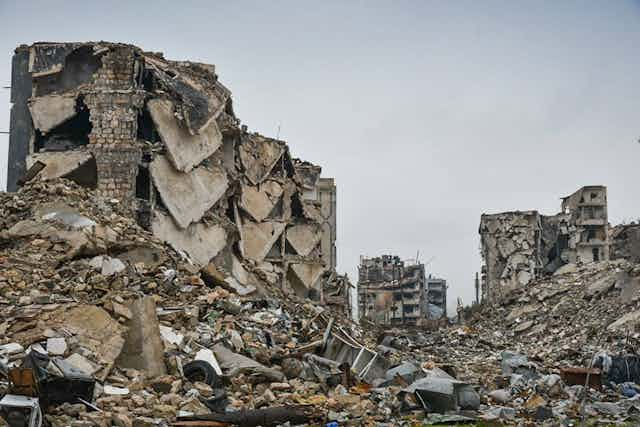In 2015 the Welsh singer and activist Charlotte Church was widely ridiculed in the right-wing press and on social media for saying on BBC Question Time that climate change had played an important part in causing the conflict in Syria.
From 2006 until 2011, [Syria] experienced one of the worst droughts in its history, which of course meant that there were water shortages and crops weren’t growing, so there was mass migration from rural areas of Syria into the urban centres, which put on more strain, and made resources scarce etc, which apparently contributed to the conflict there today.
Goaded on by the tabloids, Church reaped a whirlwind of public ridicule:
But what she said was correct – and there will be an increasing convergence of climate, food, economic and political crises in the coming years and decades. We need to better understand the interconnectivity of environmental, economic, geopolitical, societal and technological systems if we are to manage these crises and avoid their worst impacts.
In particular, tipping points exist in both physical and socio-economic systems, including governmental or financial systems. These systems interact in complex ways. Small shocks may have little impact but, a particular shock or set of shocks could tip the system into a new state. This new state could represent a collapse in agriculture or even the fall of a government.
In 2011, Syria became the latest country to experience disruption in a wave of political unrest crossing North Africa and the Middle East. Religious differences, a failure of the ruling regime to tackle unemployment and social injustice and the state of human rights all contributed to a backdrop of social unrest. However, these pressures had existed for years, if not decades.
So was there a trigger for the conflict in the region which worked in tandem with the ongoing social unrest?
Syria, and the surrounding region, has experienced significant depletion in water availability since 2003. In particular an intense drought between 2007 and 2010, alongside poor water management, saw agricultural production collapse and a mass migration from rural areas to city centres. Farmers, who had been relatively wealthy in their rural surroundings now found themselves as the urban poor reliant on food imports. Between 2007 and 2009 Syria increased its annual imports of wheat and meslin (rice flour) by about 1.5m tonnes. That equated to a more than ten-fold increase in importing one of the most basic foods.

Complex system
There is a tendency these days to believe that global trade will protect the world from food production shocks. A small production shock in one region can be mitigated by increasing, temporarily, imports of food or by sourcing food from another region. However, certain shocks, or a set of shocks, could create an amplifying feedback that cascades into a globally significant event.
The food system today is increasingly complex and an impact in land, water, labour or infrastructure could create fragility. A large enough perturbation can lead to a price response in the global market that sends a signal to other producers to increase their output to make up for any shortfall. While increased prices can be beneficial to farmers and food producers, if the price increase is large enough it can have a significant impact on communities that are net food importers.
Additionally, food production is concentrated both in a relatively small handful of commodity crops such as wheat, rice and maize as well as from a relatively small number of regions, for example the US, China and Russia. This concentration means any disruption in those regions will have a large impact on global food supply. Reliance on global markets for sourcing food can therefore be a source of systemic risk.
Rising prices
In 2008 the global price of food increased dramatically. This increase was the result of a complex set of issues including historically low global food stocks, drought in Australia following production lows in several other areas over the previous few years, and speculation and an increase in biofuel production in North America.

This spike in global food price in 2008 was a factor in the initial unrest across North Africa and the Middle East, which became known as the Arab Spring. As prices peaked, violence broke out in countries such as Egypt, Libya and Tunisia.
In Syria a local drought which coincided with this global shock in food prices resulted in dramatic changes in the availability and cost of food. In response small groups of individuals protested. The government response, combined with a background of rising protests, existing social tensions and instability in the wider region, quickly escalated into the situation we are experiencing today.
The events in Syria, then, appear to stem from a far more complex set of pressures, beyond religious tension and government brutality, with its roots in the availability of a natural resource – water – and its impact on food production. This is worrying as decreasing water availability is far from a localised issue – it is a systemic risk across the Middle East and North Africa. Over the coming decades this water security challenge is likely to be further exacerbated by climate change.
To better manage these types of risks in the future, and to build societal resilience, the world needs to understand our society’s interdependence on natural resources and how this can lead to events such as those that unfolded in Syria. We need analytical, statistical, scenario or war game-type models to explore different possible futures and policy strategies for mitigating the risk. By understanding sources of political instability we hope to get a better handle on how these types of crisis arise.

